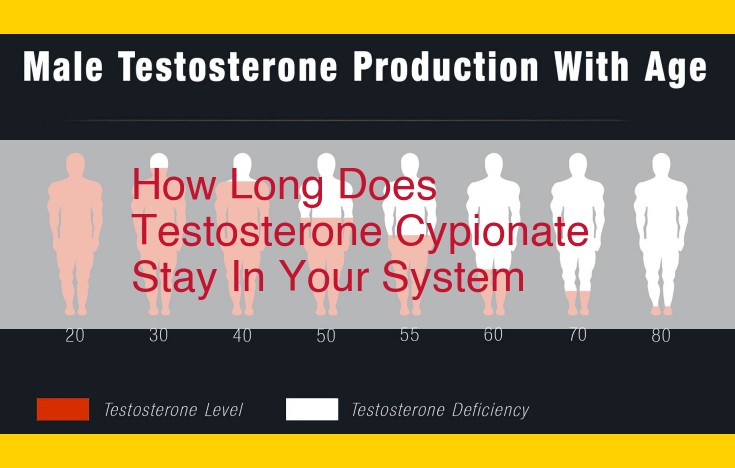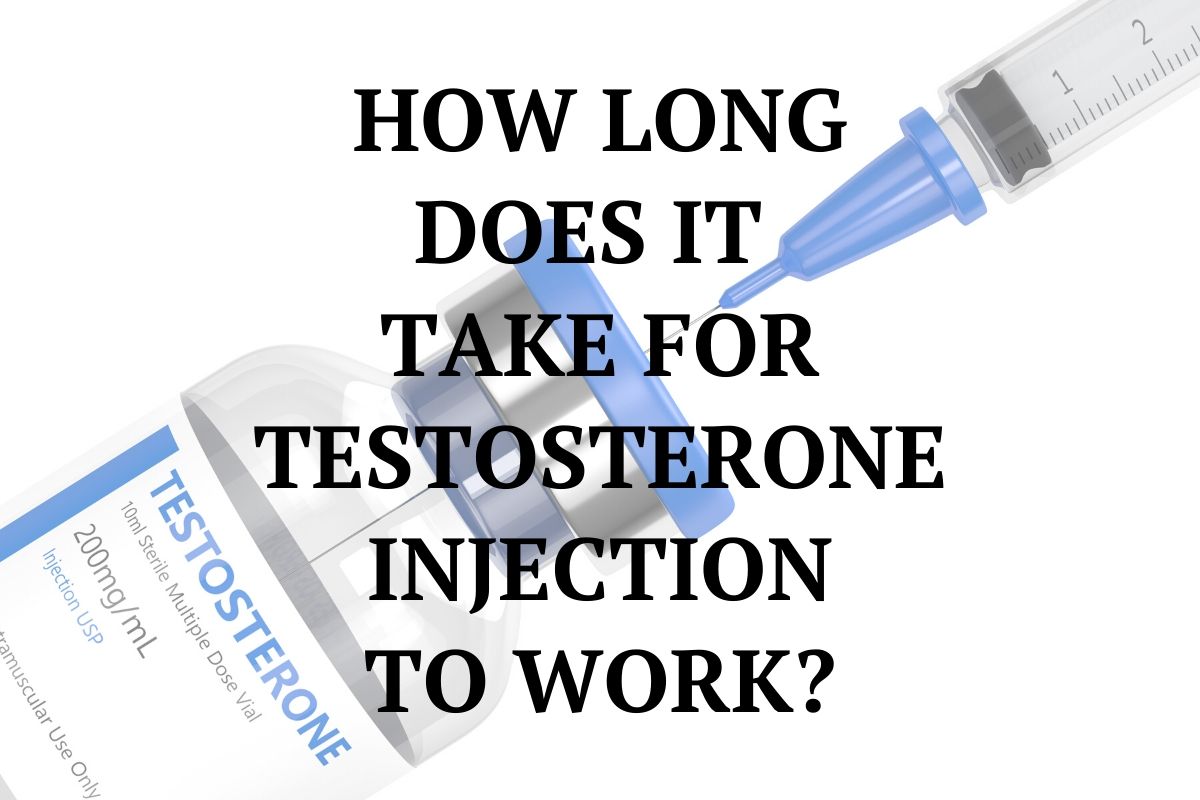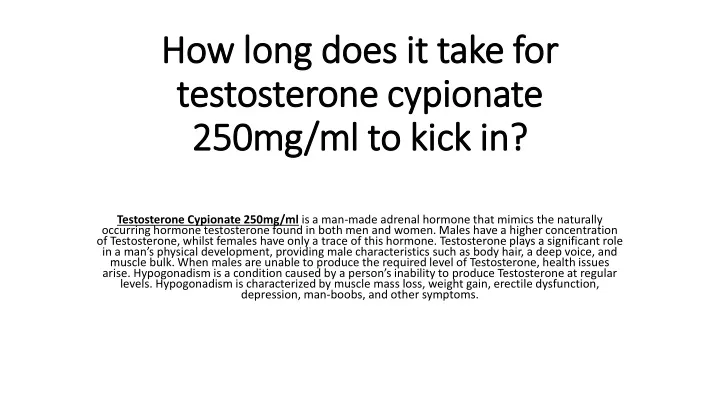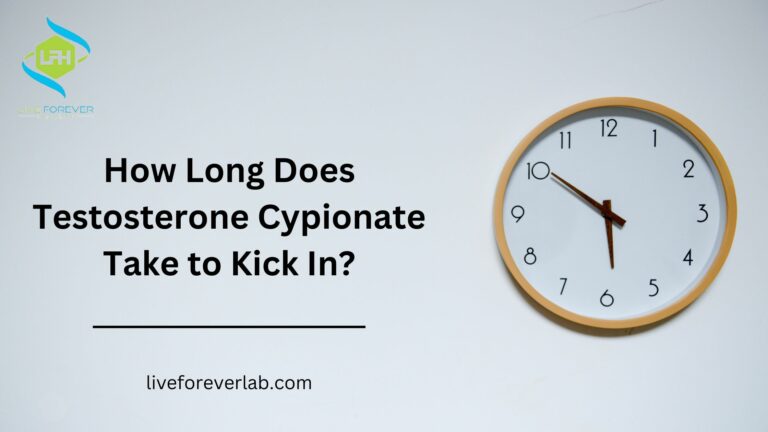How Long Does Testosterone Cypionate Stay In Your System

For individuals undergoing testosterone replacement therapy (TRT) or athletes subject to doping regulations, understanding the detection window of Testosterone Cypionate in the body is crucial. This knowledge informs treatment adherence, helps athletes avoid inadvertent violations, and aids law enforcement in drug testing contexts.
This article explores the factors influencing how long Testosterone Cypionate remains detectable in the system, providing an overview of its pharmacokinetics, detection methods, and the implications for different populations. It aims to offer a clear, evidence-based understanding of this important aspect of testosterone administration.
What is Testosterone Cypionate?
Testosterone Cypionate is an injectable form of testosterone, a primary male sex hormone responsible for the development and maintenance of masculine characteristics. It is a synthetic androgen ester, meaning it's a modified form of testosterone designed to be released slowly into the bloodstream after intramuscular injection.
Due to its slow-release properties, it's commonly prescribed for TRT to treat conditions like hypogonadism, where the body doesn't produce enough testosterone naturally. It's also unfortunately abused by some athletes to enhance muscle growth and athletic performance.
Pharmacokinetics and Detection Window
The detection window of Testosterone Cypionate refers to the period after administration during which the substance or its metabolites can be detected in the body through various testing methods. The length of this window is influenced by the drug's pharmacokinetics, including its absorption, distribution, metabolism, and excretion.
Once injected, Testosterone Cypionate is slowly released from the injection site into the bloodstream. It's then metabolized by the body, and its metabolites are eventually excreted in urine.
The detection window varies depending on the type of test used. Testosterone Cypionate itself may be detectable in blood for a shorter period compared to its metabolites, which can linger in urine for a more extended duration.
Factors Influencing Detection Time
Several factors can influence how long Testosterone Cypionate remains detectable: dosage, frequency of administration, individual metabolism, and testing methods.
Higher doses and more frequent injections generally lead to longer detection windows. Individuals with faster metabolisms may clear the drug and its metabolites more quickly than those with slower metabolisms.
The sensitivity of the testing method also plays a crucial role. Highly sensitive tests can detect even trace amounts of the drug or its metabolites, extending the detection window.
Detection Methods
Several methods are used to detect Testosterone Cypionate, primarily blood and urine tests. Blood tests can measure testosterone levels directly, while urine tests detect the presence of testosterone metabolites.
Gas chromatography-mass spectrometry (GC-MS) is a common method used in urine testing for doping control. This technique is highly sensitive and can differentiate between natural testosterone and synthetic versions like Testosterone Cypionate.
The World Anti-Doping Agency (WADA) sets the standards for doping control and determines the specific detection methods and thresholds used in sports drug testing.
Typical Detection Window
While the exact detection window can vary, Testosterone Cypionate is generally detectable in urine for approximately 3-4 months after the last injection. Some sources suggest a detection window of up to 4 months.
Blood tests may detect Testosterone Cypionate for a shorter duration, typically several weeks after the last injection. These are approximate ranges and individual variations are expected.
It is important to note that these are general estimates, and consulting with a medical professional or a qualified doping control expert is crucial for obtaining accurate and personalized information.
Implications for Different Populations
For individuals undergoing TRT, understanding the detection window is important for managing their treatment effectively. It allows them to adhere to their prescribed regimen without concerns about inadvertently failing a drug test, especially if they are subject to workplace or other types of drug testing.
For athletes, knowledge of the detection window is critical for avoiding doping violations. Even unintentional exposure to banned substances can have serious consequences, including disqualification and damage to their reputation.
Law enforcement agencies rely on drug testing to detect the use of anabolic steroids like Testosterone Cypionate. Accurate detection methods and knowledge of detection windows are essential for effective enforcement of drug laws.
Conclusion
The detection window of Testosterone Cypionate varies depending on factors such as dosage, individual metabolism, and testing methods. While urine tests typically detect the drug's metabolites for 3-4 months, blood tests have a shorter detection window.
Understanding these factors is crucial for individuals undergoing TRT, athletes subject to doping regulations, and law enforcement agencies involved in drug testing. Accurate knowledge helps ensure compliance with treatment plans, prevent doping violations, and enforce drug laws effectively.
Always consult with a healthcare professional or doping control expert for personalized guidance and the most up-to-date information regarding Testosterone Cypionate detection.


















